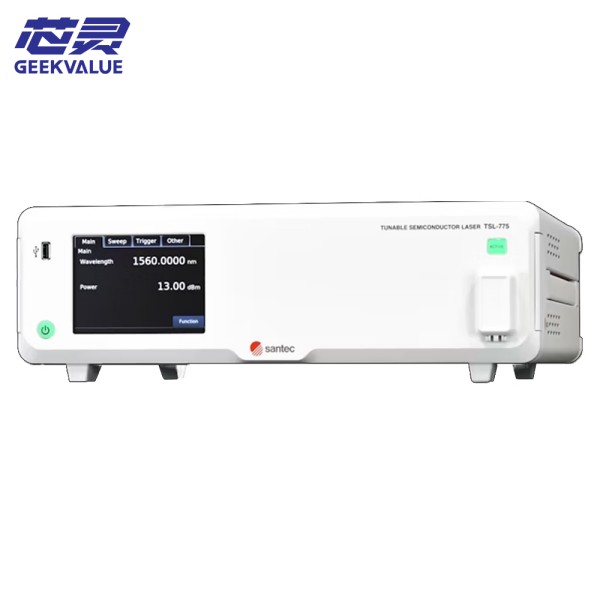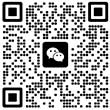Santec TSL-775 huwa laser tunable ta 'qawwa għolja u ta' firxa wiesgħa ta 'rfinar iddisinjat għall-ittestjar tal-komunikazzjoni ottika, sensing ottiku, karatterizzazzjoni ta' ċirkwit integrat fotoniku (PIC), u riċerka xjentifika avvanzata. Bħala rappreżentant tas-serje tal-laser tunable high-end ta 'Santec, TSL-775 jeċċella fil-qawwa tal-ħruġ, il-preċiżjoni tal-wavelength, u l-veloċità tal-irfinar, u huwa adattat għal applikazzjonijiet b'rekwiżiti stretti fuq il-prestazzjoni tas-sors tad-dawl.
1. Karatteristiċi ewlenin u vantaġġi tekniċi
(1) Firxa wiesgħa ta 'rfinar ta' wavelength
Firxa tal-wavelength: 1480–1640 nm (li tkopri l-banda C u l-medda L), kompatibbli mat-twieqi tal-komunikazzjoni tal-fibra ottika mainstream.
Ir-riżoluzzjoni tal-irfinar: 0.1 pm (livell tal-pikometru), li tappoġġja l-iskannjar ta 'wavelength ta' preċiżjoni għolja.
(2) Qawwa għolja tal-ħruġ
Qawwa massima tal-ħruġ: 80 mW (tipiku), li tissodisfa l-ħtiġijiet ta 'ttestjar tal-fibra fuq distanza twila u karatterizzazzjoni ta' apparat ta 'telf għoli.
Stabbiltà tal-enerġija: ± 0.02 dB (terminu qasir), li tiżgura l-affidabilità tad-dejta tat-test.
(3) Irfinar ta 'wavelength b'veloċità għolja
Veloċità tal-irfinar: sa 200 nm/s, adattata għal applikazzjonijiet ta 'skanjar veloċi (bħal analiżi spettrali, OCT).
Ripetibbiltà tal-wavelength: ±1 pm, li tiżgura konsistenza ta 'skans multipli.
(4) Ħoss baxx u wisa 'tal-linja dejqa
Wisa 'tal-linja spettrali: <100 kHz (livell ta' komunikazzjoni koerenti), storbju tal-fażi estremament baxx.
Ħoss ta 'intensità relattiva (RIN): <-150 dB/Hz, adattat għal skoperta ta' sensittività għolja.
(5) Modulazzjoni u kontroll flessibbli
Bandwidth ta 'modulazzjoni diretta: DC–100 MHz, li jappoġġja modulazzjoni analoga/diġitali.
Interface: GPIB, USB, LAN, kompatibbli ma 'sistemi ta' test awtomatizzati.
2. Żoni ta 'applikazzjoni tipiċi
(1) Ittestjar tal-komunikazzjoni ottika
Verifika tas-sistema DWDM: jissimulaw kanali b'ħafna tul ta 'mewġ, test ta' moduli ottiċi u prestazzjoni ROADM.
Karatterizzazzjoni ta 'apparat ottiku tas-silikon: kejjel ir-rispons dipendenti fuq il-wavelength ta' modulaturi u waveguides.
(2) Sensing ottiku
Demodulazzjoni FBG (Fiber Bragg Grating): sejbien ta 'preċiżjoni għolja ta' bidla tal-wavelength ikkawżata minn temperatura/razza.
Sensing tal-fibra distribwita (DAS/DTS): jipprovdi sors ta 'dawl ta' qawwa għolja u stabbli.
(3) Ittestjar ta 'ċirkwit integrat fotoniku (PIC).
Debugging taċ-ċippa fotonika tas-silikon: skannjar ta 'wavelength veloċi, evalwazzjoni tat-telf ta' inserzjoni tal-apparat, crosstalk u parametri oħra.
Integrazzjoni tas-sors tal-lejżer aġġustabbli: użata għall-verifika tal-prestazzjoni relatata mal-wavelength tal-PIC.
(4) Esperimenti ta' riċerka xjentifika
Ottika kwantika: ġenerazzjoni ta 'pari ta' fotoni mħabblin, distribuzzjoni taċ-ċavetta quantum (QKD).
Riċerka ottika mhux lineari: stimulat Brillouin scattering (SBS), taħlit ta 'erba' mewġ (FWM).
3. Parametri Tekniċi (Valuri Tipiċi)
Parametri TSL-775 Speċifikazzjonijiet
Medda tat-tul tal-mewġ 1480–1640 nm (banda C/L)
Qawwa tal-ħruġ 80 mW (massimu)
Preċiżjoni tal-wavelength ±1 pm (kalibrazzjoni tal-miter tal-wavelength integrata)
Veloċità tal-irfinar Sa 200 nm/s
Wisa' tal-linja spettrali <100 kHz
Stabbiltà tal-enerġija ±0.02 dB (terminu qasir)
Faxxa tal-modulazzjoni DC–100 MHz
Interfaces GPIB, USB, LAN
4. Tqabbil mal-kompetituri (TSL-775 vs lasers sintonizzabbli oħra)
Karatteristiċi TSL-775 (Santec) Keysight 81600B Yenista T100S-HP
Medda tat-tul tal-mewġ 1480–1640 nm 1460–1640 nm 1500–1630 nm
Qawwa tal-ħruġ 80 mW 10 mW 50 mW
Veloċità tal-irfinar 200 nm/s 100 nm/s 50 nm/s
Preċiżjoni tal-wavelength ±1 pm ±5 pm ±2 pm
Xenarji applikabbli Test ta 'veloċità għolja/karatterizzazzjoni PIC Test ġenerali ta' komunikazzjoni Sensing ta 'qawwa għolja
5. Sommarju tal-vantaġġi ewlenin
Output ta 'qawwa għolja (80 mW) - adattat għal xenarji ta' test fuq distanza twila jew ta 'telf kbir.
Irfinar ultraveloċi (200 nm/s) - itejjeb l-effiċjenza tat-test u jadatta għar-rekwiżiti tal-iskannjar dinamiku.
Preċiżjoni tal-wavelength fil-livell tal-pikometru - tissodisfa r-rekwiżiti tat-test ta 'preċiżjoni ta' ċirkwiti integrati fotoniċi (PICs).
Ħoss baxx u wisa 'tal-linja dejqa - jipprovdi sors ta' dawl pur għal komunikazzjoni koerenti u esperimenti quantum.
Utenti tipiċi:
Manifatturi tat-tagħmir tal-komunikazzjoni ottika (bħal Huawei u Cisco)
Laboratorji tar-R&D taċ-ċippa fotonika (bħal Intel Silicon Photonics Team)
Istituzzjonijiet nazzjonali tar-riċerka xjentifika (teknoloġija kwantika, sensing ottiku)




